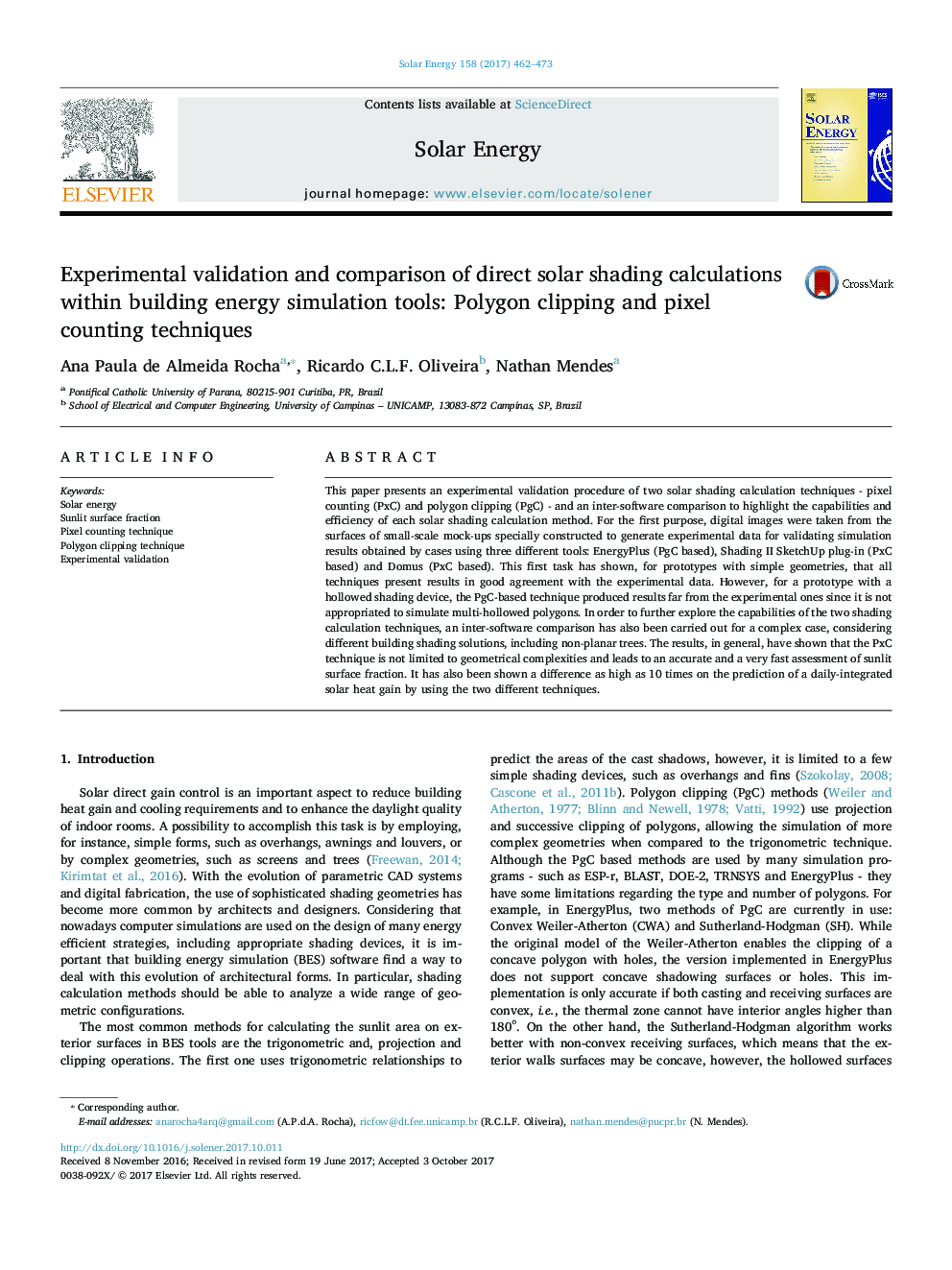| Article ID | Journal | Published Year | Pages | File Type |
|---|---|---|---|---|
| 5450548 | Solar Energy | 2017 | 12 Pages |
Abstract
This paper presents an experimental validation procedure of two solar shading calculation techniques - pixel counting (PxC) and polygon clipping (PgC) - and an inter-software comparison to highlight the capabilities and efficiency of each solar shading calculation method. For the first purpose, digital images were taken from the surfaces of small-scale mock-ups specially constructed to generate experimental data for validating simulation results obtained by cases using three different tools: EnergyPlus (PgC based), Shading II SketchUp plug-in (PxC based) and Domus (PxC based). This first task has shown, for prototypes with simple geometries, that all techniques present results in good agreement with the experimental data. However, for a prototype with a hollowed shading device, the PgC-based technique produced results far from the experimental ones since it is not appropriated to simulate multi-hollowed polygons. In order to further explore the capabilities of the two shading calculation techniques, an inter-software comparison has also been carried out for a complex case, considering different building shading solutions, including non-planar trees. The results, in general, have shown that the PxC technique is not limited to geometrical complexities and leads to an accurate and a very fast assessment of sunlit surface fraction. It has also been shown a difference as high as 10 times on the prediction of a daily-integrated solar heat gain by using the two different techniques.
Keywords
Related Topics
Physical Sciences and Engineering
Energy
Renewable Energy, Sustainability and the Environment
Authors
Ana Paula de Almeida Rocha, Ricardo C.L.F. Oliveira, Nathan Mendes,
